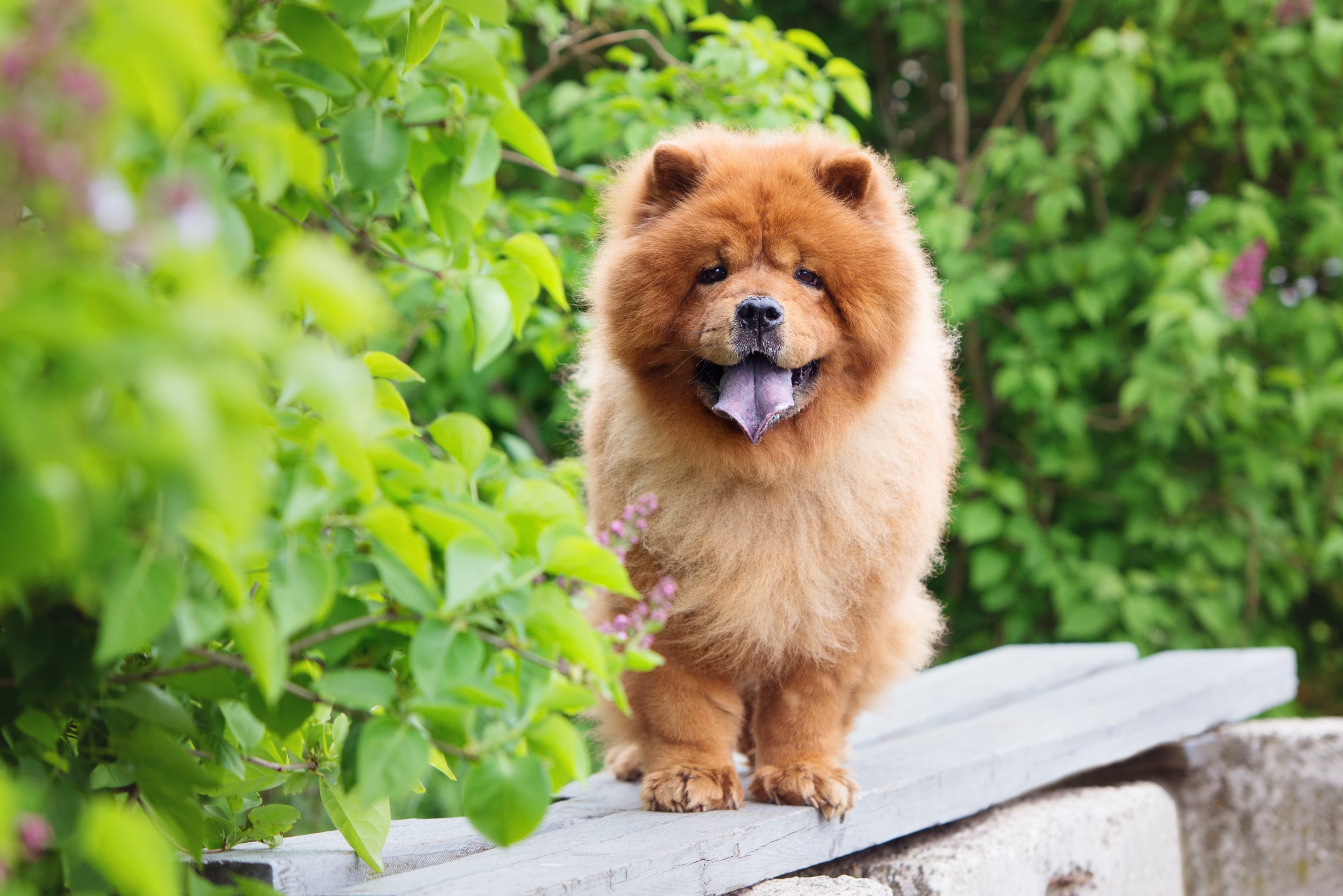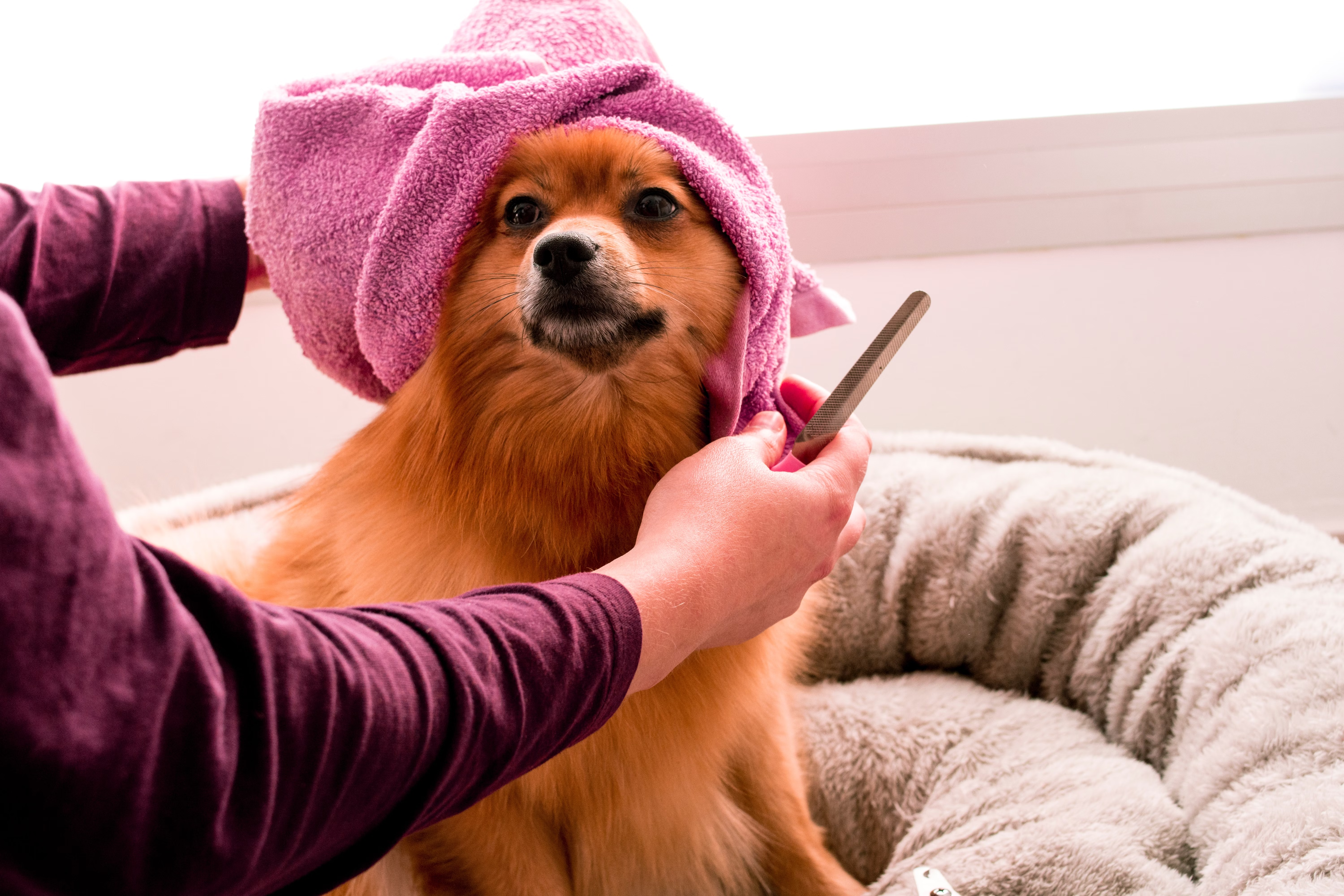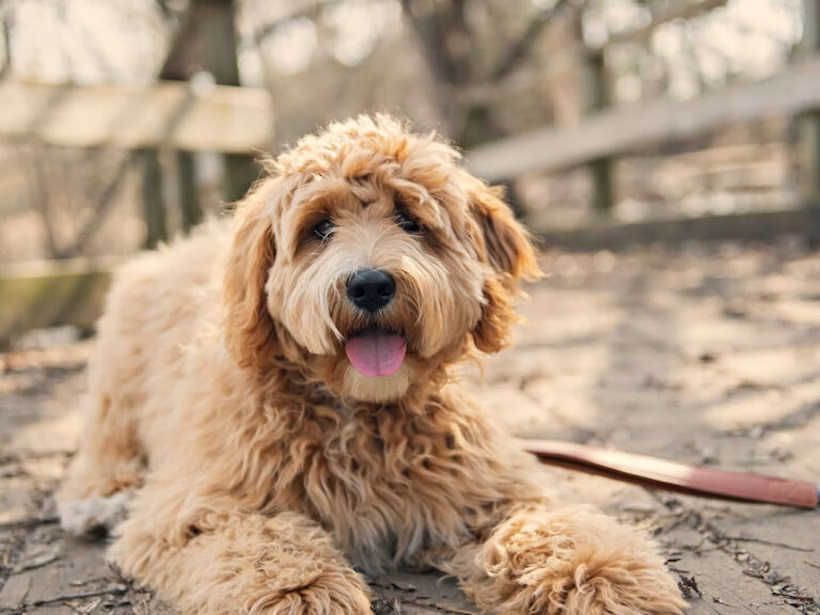If it seems like some dogs were born to shed, it’s because genetics play a role in a pup’s shedding frequency. But their DNA isn’t the only factor in why or how much dogs shed. In this post, we’ll take a look at how a dog’s coat type influences shedding and discuss when a dog’s shedding patterns are normal and when a medical issue may be at play.
Why do dogs shed?
Shedding is a normal process in dogs. It’s part of the body’s way of renewing hair and maintaining a healthy coat. But the amount of shedding can vary widely depending on several factors, including genetics, seasonal cycles, and overall health.
Coat renewal and growth cycles: Just like humans lose hair naturally over time, dogs shed as part of the hair growth cycle. The phases—growth, transition, rest, and shedding—occur at different rates depending on the breed and coat type. Breeds with a coat that grows continuously, like Poodles, spend more time in the growth phase, while short-coated breeds spend more time in the rest phase.
Genetics: Breed plays a big role in determining how much your dog sheds. Certain genes influence coat length, texture, and whether or not a dog has an undercoat, all of which contribute to how much a dog sheds (and how often you need to vacuum).
Seasonal changes: Most dog breeds shed more in the spring and fall so they’re prepared for the temperature shifts. They shed their heavy winter coats in warmer months, then shed their lighter summer coats before growing thicker coats for colder seasons. Dogs that spend a lot of time indoors may experience a less dramatic seasonal cycle than dogs that are outside a lot.
Health and nutrition: While cyclical shedding is normal in healthy dogs, skin conditions, hormonal imbalances, parasites, or poor diet can cause abnormal shedding. If you notice sudden or patchy hair loss in your dog, especially if those areas also seem itchy, it’s a good idea to consult a veterinarian to rule out underlying health issues.
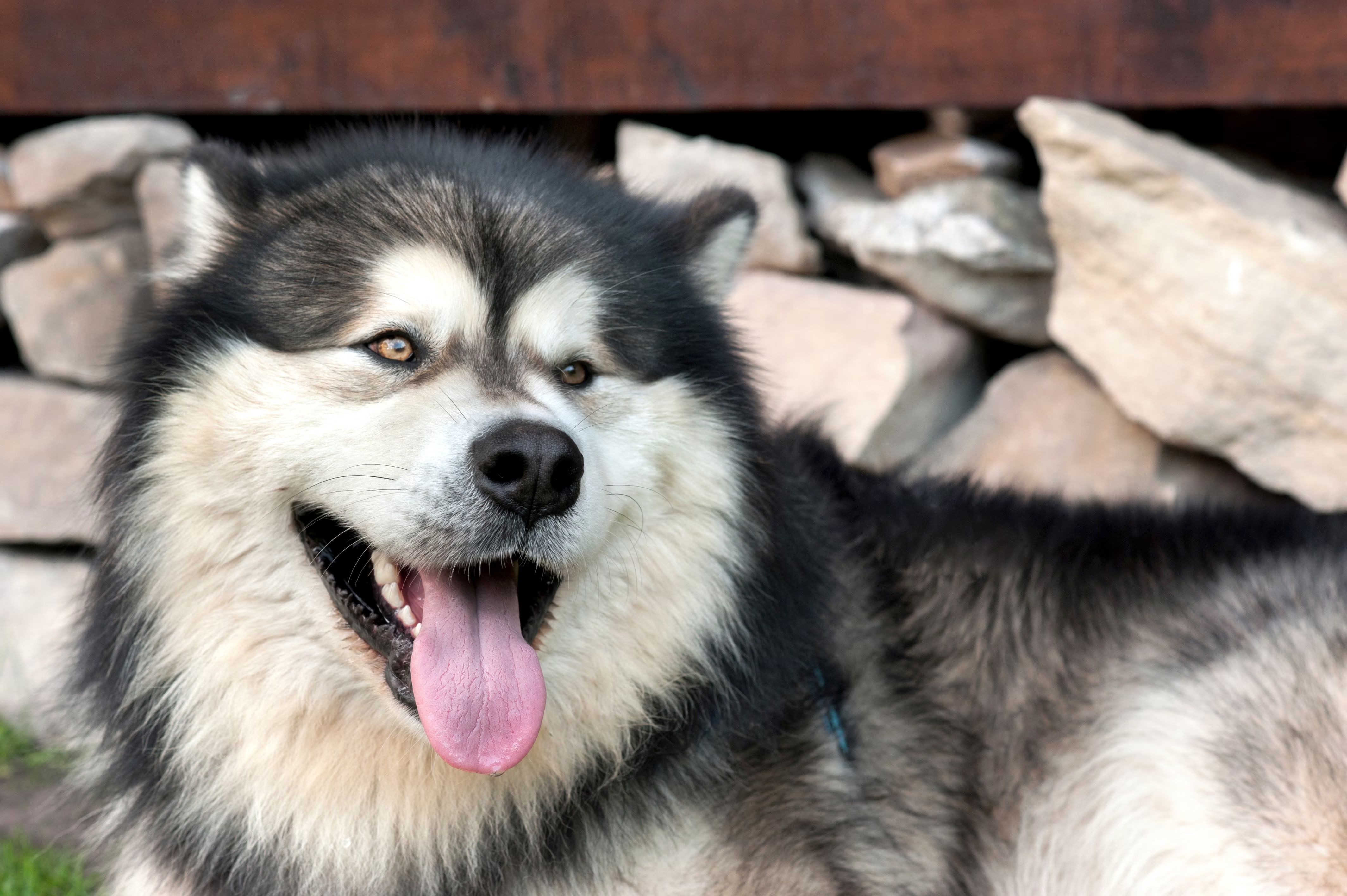
Dog breeds that shed the most
If you’re looking for a low-maintenance coat, you might want to think twice before bringing home one of these heavy shedding dog breeds.
1. Siberian Husky
Siberian Huskies are known for their seasonal shedding. This double-coated breed “blows” their undercoat twice a year, releasing a huge amount of fur all at once. Regular brushing is a must, especially during spring and fall.
2. Labrador Retriever
Despite their short fur, Labs are year-round shedders. Their dense double coat requires frequent grooming to keep hair under control.
3. Golden Retriever
Golden Retrievers have medium to long coats with feathering and a soft undercoat. They shed heavily year-round—with a noticeable uptick during seasonal changes. Brushing several times a week helps reduce tangles and loose hair.
4. Alaskan Malamute
Bred for cold climates, Malamutes have incredibly dense, coarse coats. They need regular grooming with de-shedding tools and frequent brushing to prevent matting.
5. German Shepherd Dog
German Shepherds are another year-round shedder. Even with regular grooming, they often leave a visible trail of fur wherever they go.
6. Bernese Mountain Dog
Bernese Mountain Dogs shed their soft undercoat year-round, with heavier shedding during seasonal changes.
7. Akita
During parts of the year, self-grooming Akitas are considered low-shedding. However, during the spring and fall they blow their dense undercoats, so get the broom ready!
8. Corgi
Corgis heavily shed their thick, weather-resistant double coat—especially "fluffies" that have exaggerated feathering and longer hair.
9. Chow Chow
Chow Chows are known for their thick, mane-like coat, which requires regular grooming to keep it looking its best. They shed heavily, especially during seasonal transitions.
10. Great Pyrenees
Bred to guard livestock in the mountains, the Great Pyrenees has a long, wooly, weather-resistant coat that sheds continuously.
When it comes to shedding, looks can be deceiving
Not all heavy shedders look the part. Some breeds with short coats or mixed-breed dogs can still leave a significant amount of hair behind—especially if they carry genes for dense or double coats.
For example, a short-haired mixed-breed dog might look low-maintenance but inherit traits from breeds like the Labrador or Husky. Visual identification isn’t enough to predict coat type or shedding behavior, especially in mixed-breed dogs. DNA testing can offer more insight into a dog’s shedding tendencies.
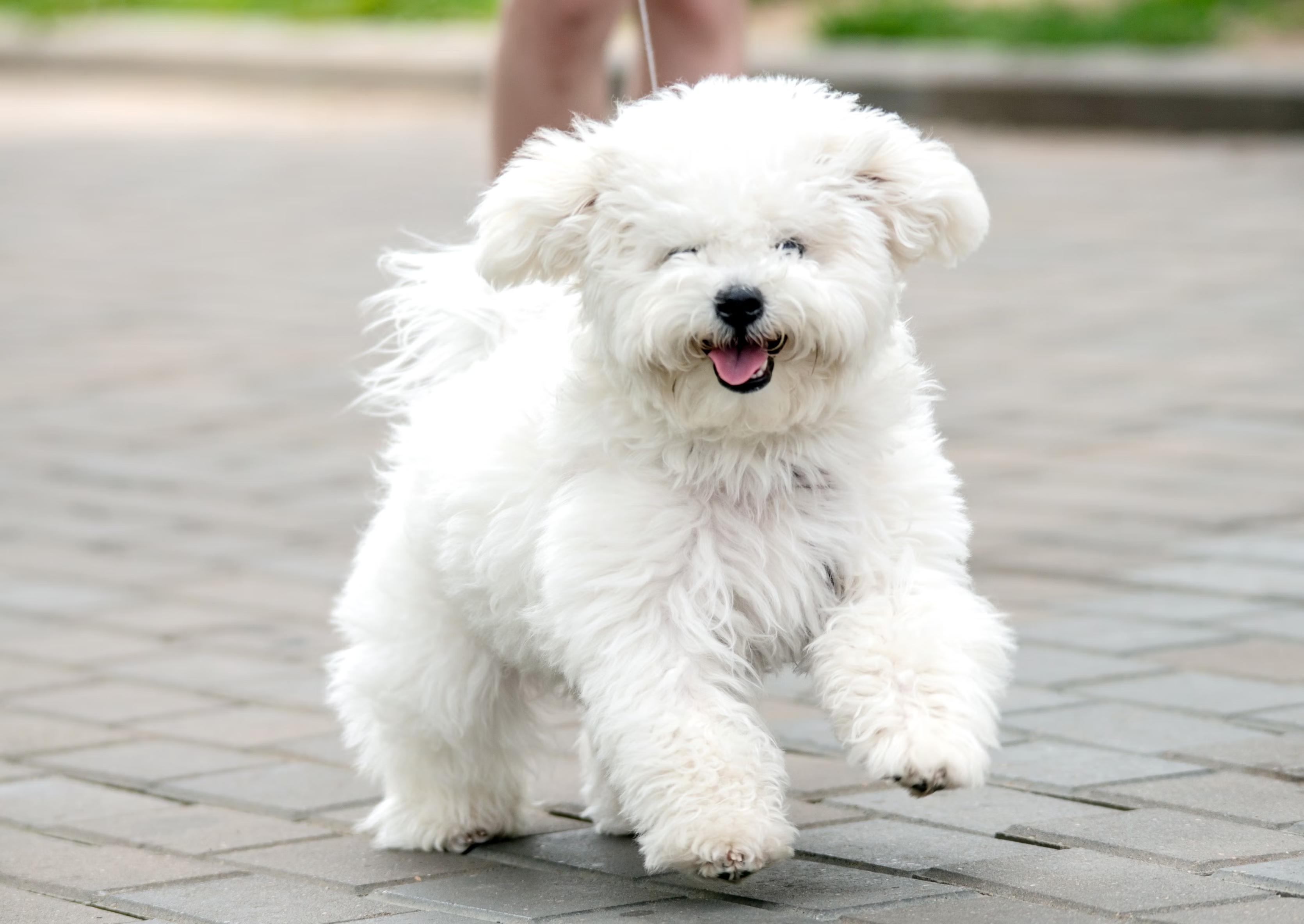
What about “hypoallergenic” breeds?
Despite the buzz, no dog is truly hypoallergenic. People with dog allergies react to proteins found in skin cells, saliva, and urine—not the hair itself. However, since fur can carry dander (dead skin flakes), low-shedding breeds may release fewer allergens into the environment.
Some lower-shedding breeds include:
- Poodle
- Bichon Frise
- Portuguese Water Dog
- Soft-Coated Wheaten Terrier
- Shih Tzu
Still, even these breeds require consistent grooming to manage dander, prevent mats, and keep hair at an appropriate length. It’s also worth noting that individual dogs may still trigger allergies differently.
How DNA testing can predict shedding tendencies
While breed tendencies offer some clues, DNA testing gives you a more accurate picture of your dog’s coat traits.
Wisdom Panel™ Premium and Essential dog DNA tests screen for key genetic markers linked to:
- Reduced shedding: A variant located in the MC5R gene influences how much hair your dog is likely to shed
- Coat length: Long vs. short hair can impact grooming needs
- Coat curl: Curly-coated dogs like Poodles often shed less because the curls trap loose hair
Understanding your dog’s genetic makeup can help you set realistic grooming expectations and choose appropriate grooming tools to maintain your pup’s coat.
Final thoughts
If you’re wondering what dogs shed the most, the answer often lies in coat type, breed, and genetics. Double-coated breeds like Huskies, Labs, and German Shepherds are among the heaviest shedders—but shedding can vary widely even within a breed.
Whether you’re looking to minimize shedding or just want to better manage your dog’s grooming routine, knowing what to expect from your dog’s coat is key. And a DNA test can shed (pun!) some light on the mystery.
